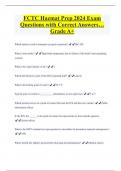Resume
Marketing Communications Summary RU (including important parts of book)
- Cours
- Établissement
- Book
A summary which contains of all you need to know for the exam! I received a 9,3 using this summary. All the important parts of the book are in there and everything that has been discussed during the lectures.
[Montrer plus]













